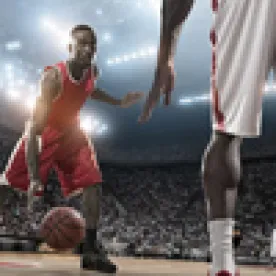Just two months after the landmark ruling from U.S. District Judge Claudia Wilken in favor of a group of college student-athletes led by retired professional basketball player Ed O’Bannon against the NCAA, the University of Texas (UT) became the first university to begin paying each of its student athletes $10,000 a year to cover, in equal amounts, the cost of attendance and compensation for the use of the athlete’s name and likeness in promotions and advertising, Athletic Director Steve Patterson announced October 21. In O’Bannon v. NCAA, Judge Wilken struck down NCAA regulations prohibiting student athletes from receiving compensation beyond scholarships for their names, images and likenesses. Judge Wilken’s ruling also provided that NCAA member schools should be allowed to place up to $5,000 per athlete per year of competition into a trust fund for football players and men’s basketball players, which the players could collect after leaving school.
Following UT’s announcement, the Pac-12 Conference passed sweeping reforms for all athletes in a vote of the presidents and chancellors of the Conference’s 12 member-universities on October 28th. The changes apply to Pac-12 student-athletes across all sports, and include the following benefits:
-
Athletic scholarships will be guaranteed for four years for student-athletes.
-
Student-athletes who leave school before graduating will be able to return and receive necessary educational expenses towards the completion of their degree.
-
Medical expenses for student-athletes who are injured during their college athletic careers will be covered for up to four years after a student-athlete leaves the institution.
-
Student-athletes who transfer between Pac-12 institutions will be able to receive athletic scholarships immediately.
-
Student-athletes will be represented in the Conference governance structure.
Pac-12 Commissioner Larry Scott praised the Conference’s decision to dramatically update its benefits for student athletes:
“I believe these reforms will mean a great deal to student-athletes in the Pac-12.
These reforms will ensure they enjoy a positive collegiate sports experience, and graduate with a meaningful college degree.
This set of reforms also addresses various health and financial concerns that student-athletes have expressed to me in the many conversations I’ve had with them, while preserving the essence of the collegiate experience that has served so many student-athletes so well. I am very proud of the national leadership position our presidents, chancellors, athletics directors, senior women administrators, faculty athletic representatives, and other administrators have taken.”
A full link to the announcement from the Pac-12 can be found here: http://pac-12.com/article/2014/10/27/pac-12-universities-adopt-sweeping-reforms-student-athletes-guaranteeing.
The comprehensive reforms from UT and Pac-12 Conference appear to signal the beginning of a major shift in the perception of organized amateur sports at NCAA institutions. Such changes are likely to herald a future in which college athletes will be paid. However, these changes also raise the question of whether the NCAA will change its stance on the amateur status of prospective student-athletes.
NCAA rules mandate that all incoming student-athletes be certified as amateurs. To remain eligible for intercollegiate competition, all prospective student-athletes must adhere to NCAA amateurism requirements, which prohibit receipt of a payment or salary for participating in athletics.
The issue was brought into focus this past summer when 13-year-old Little League World Series star Mo’ne Davis appeared in a paid commercial for Chevrolet. The first female athlete in Little League World Series history to pitch a shutout, Davis was offered endorsement deals, including the opportunity to appear in a commercial for the automobile division of GM.
Shortly after the commercial aired, many speculated whether it would jeopardize Davis’s amateur status and eligibility for the NCAA. If the NCAA strictly followed the letter of the law, Davis’s opportunity to compete in collegiate sports might have been at risk.
Responding almost immediately to the controversy, NCAA spokesperson Emily James stated that Davis could be paid for appearing in the commercial without affecting her NCAA eligibility. James explained:
Since January, NCAA Division 1 membership gave staff more flexibility to consider unique circumstances when determining eligibility. The NCAA staff’s decision was made within this process and based on a combination of considerations. This waiver narrowly extends the rules – which allow Davis to accept the payment and still be eligible in any other sport – to include baseball. The NCAA staff also considered the historically limited opportunities for women to participate in professional baseball. In addition, Davis is much younger than when the vast majority of the prospect rules apply. While this situation is unusual, the flexible approach utilized in this decision is not.
James’s statement suggests that prior to enrolling in a NCAA school, an athlete may profit off of his or her likeness and remain eligible for any sport other than the one used to generate the profit. James did not refer to any existing NCAA rule in her statement.
While appearing to set a major precedent, James’s statement also recognized there were exceptional circumstances in this case. Notably, the NCAA recognized that as a 13-year-old, Davis is much younger than when the vast majority of the NCAA prospects rules apply. That, along with the “historically limited opportunities for women to participate in professional baseball,” appeared to that tip the scale in favor of allowing Davis to profit from her image without compromising her potential future in NCAA athletics.
What is unclear from the NCAA’s statement is whether Davis would have retained her eligibility if some of these factors were eliminated. For example, what if Davis had been playing at the high school level as opposed to Little League? What if her success came on the basketball court instead of the baseball field?
It is probably premature to view the Davis case a signaling a general relaxation in NCAA’s eligibility rules. Still, the NCAA’s action there, following a Federal Court decision saying payments on behalf of current athletes were warranted, and subsequent steps taken by UT and the Pac-12 to compensate their athletes, are developments worth watching as possible “leading indicators.”




 />i
/>i
